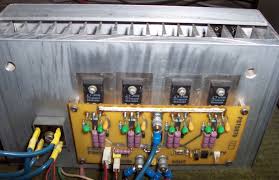
Construction companies engaged in the infrastructure sector are going through good times currently, driven by Government push towards infrastructure development and supported by a significant increase in infrastructure capital outlay, particularly in the roads, railways and the urban infrastructure segments. In the current cycle, construction companies have significantly boosted their order book; with most having order books over three times last year’s operating income. As per an ICRA note on the sector, medium-sized road and irrigation projects have witnessed average 8-12 bids per project with the projects mostly getting awarded at a discount to the base price. The execution pace, particularly for road projects, has also witnessed a marked improvement with steps towards reducing key bottlenecks like right of way, faster clearances, etc. These factors have helped improve the overall operating environment for the construction sector.
Most leaders in the current cycle have healthy financial and operational profiles which are expected to support their growth over the medium term. Further, the risk profile of the prominent public-private-partnership (PPP) mode of project awarding currently in use – the Hybrid Annuity Model (HAM) – is more balanced as traffic risk is not borne by the concessionaire. There has been an improvement in the PPP projects in the road sector post introduction of the HAM projects.
According to Shubham Jain, Vice-President and Group-Head, Corporate Ratings, ICRA: “The learning from the last cycle has helped players in prudent risk management, while staying away from unrelated investments thus supporting their financial risk profile. The strategy to focus on bidding for cluster projects, lower sub-contracting, early completion, and tight monitoring of working capital has helped in improving the operational risk profile of the construction entities. The operating environment in the current cycle is also conducive for execution, which further supports their credit profile. These factors have also helped improve credit ratings in the sector.”
On the flip side, arranging funding for the PPP projects – both equity and debt – remains challenging and a key constraint for contractors who venture into the PPP projects. Also, while healthy inflow of orders should have helped in abating competitive intensity in the sector, with the increasing scale of many mid-sized construction entities as well as the recovery of some companies facing financial difficulties, the competition has remained moderate to high. There are possibilities that some players with relatively leveraged balance sheet can face difficulty if the operating environment turns weak. The fortunes of the construction sector, being cyclical, are closely linked with the performance in the underlying sectors i.e. infrastructure, real estate and industrial projects. During the last down, performance of many established construction companies declined sharply in a span of two to three years, primarily due to their exposure to the BOT projects, delays in execution impacting profitability and funds blocked in working capital and claims. As a result, many medium sized companies gained scale and competitive strength. In the National Highway segment, the share of the EPC projects awarded to players, which were leaders in the last cycle, had fallen sharply, while emerging leaders in the current cycle have been gaining steadily.



